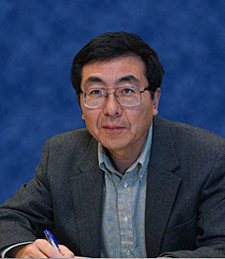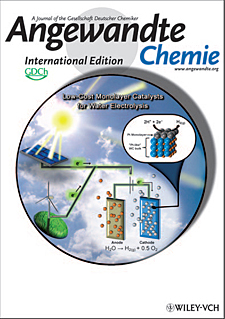ADVERTISEMENT
- Rozovsky wins prestigious NSF Early Career Award
- UD students meet alumni, experience 'closing bell' at NYSE
- Newark Police seek assistance in identifying suspects in robbery
- Rivlin says bipartisan budget action, stronger budget rules key to reversing debt
- Stink bugs shouldn't pose problem until late summer
- Gao to honor Placido Domingo in Washington performance
- Adopt-A-Highway project keeps Lewes road clean
- WVUD's Radiothon fundraiser runs April 1-10
- W.D. Snodgrass Symposium to honor Pulitzer winner
- New guide helps cancer patients manage symptoms
- UD in the News, March 25, 2011
- For the Record, March 25, 2011
- Public opinion expert discusses world views of U.S. in Global Agenda series
- Congressional delegation, dean laud Center for Community Research and Service program
- Center for Political Communication sets symposium on politics, entertainment
- Students work to raise funds, awareness of domestic violence
- Equestrian team wins regional championship in Western riding
- Markell, Harker stress importance of agriculture to Delaware's economy
- Carol A. Ammon MBA Case Competition winners announced
- Prof presents blood-clotting studies at Gordon Research Conference
- Sexual Assault Awareness Month events, programs announced
- Stay connected with Sea Grant, CEOE e-newsletter
- A message to UD regarding the tragedy in Japan
- More News >>
- March 31-May 14: REP stages Neil Simon's 'The Good Doctor'
- April 2: Newark plans annual 'wine and dine'
- April 5: Expert perspective on U.S. health care
- April 5: Comedian Ace Guillen to visit Scrounge
- April 6, May 4: School of Nursing sponsors research lecture series
- April 6-May 4: Confucius Institute presents Chinese Film Series on Wednesdays
- April 6: IPCC's Pachauri to discuss sustainable development in DENIN Dialogue Series
- April 7: 'WVUDstock' radiothon concert announced
- April 8: English Language Institute presents 'Arts in Translation'
- April 9: Green and Healthy Living Expo planned at The Bob
- April 9: Center for Political Communication to host Onion editor
- April 10: Alumni Easter Egg-stravaganza planned
- April 11: CDS session to focus on visual assistive technologies
- April 12: T.J. Stiles to speak at UDLA annual dinner
- April 15, 16: Annual UD push lawnmower tune-up scheduled
- April 15, 16: Master Players series presents iMusic 4, China Magpie
- April 15, 16: Delaware Symphony, UD chorus to perform Mahler work
- April 18: Former NFL Coach Bill Cowher featured in UD Speaks
- April 21-24: Sesame Street Live brings Elmo and friends to The Bob
- April 30: Save the date for Ag Day 2011 at UD
- April 30: Symposium to consider 'Frontiers at the Chemistry-Biology Interface'
- April 30-May 1: Relay for Life set at Delaware Field House
- May 4: Delaware Membrane Protein Symposium announced
- May 5: Northwestern University's Leon Keer to deliver Kerr lecture
- May 7: Women's volleyball team to host second annual Spring Fling
- Through May 3: SPPA announces speakers for 10th annual lecture series
- Through May 4: Global Agenda sees U.S. through others' eyes; World Bank president to speak
- Through May 4: 'Research on Race, Ethnicity, Culture' topic of series
- Through May 9: Black American Studies announces lecture series
- Through May 11: 'Challenges in Jewish Culture' lecture series announced
- Through May 11: Area Studies research featured in speaker series
- Through June 5: 'Andy Warhol: Behind the Camera' on view in Old College Gallery
- Through July 15: 'Bodyscapes' on view at Mechanical Hall Gallery
- More What's Happening >>
- UD calendar >>
- Middle States evaluation team on campus April 5
- Phipps named HR Liaison of the Quarter
- Senior wins iPad for participating in assessment study
- April 19: Procurement Services schedules information sessions
- UD Bookstore announces spring break hours
- HealthyU Wellness Program encourages employees to 'Step into Spring'
- April 8-29: Faculty roundtable series considers student engagement
- GRE is changing; learn more at April 15 info session
- April 30: UD Evening with Blue Rocks set for employees
- Morris Library to be open 24/7 during final exams
- More Campus FYI >>
2:07 p.m., Nov. 29, 2010----Jingguang G. Chen, Claire D. LeClaire Professor in the Department of Chemical Engineering at the University of Delaware, is co-author of a paper demonstrating a new way to save platinum commonly used as a catalyst in hydrogen production.
Chen's paper, entitled “Low-Cost Hydrogen Evolution Catalysts Based on Monolayer Platinum on Tungsten Monocarbide (WC) Substrates,” appears as the cover feature in a December issue of Angewandte Chemie International Edition, the leading high impact journal in the world on applied chemistry.
Co-authors of the paper include Robert W. Birkmire, professor of materials science and engineering and director of the Institute of Energy Conversion (IEC); Kevin D. Dobson, IEC research associate; students Daniel V. Esposito, Sean T. Hunt and Alan L. Stottlemyer; and Brian E. McCandless, IEC associate scientist.
Chen explains that when powered by renewable energy sources such as wind- or solar-based technologies, the generation of hydrogen from the electrolysis of water produces a high-energy-density mobile energy carrier without any associated carbon dioxide emissions. At low temperatures, this water-splitting process can take place in a variety of electrochemical devices, however, the catalyst used to initiate the hydrogen-evolution reaction (HER) can have a profound influence on cost, lifetime and efficiency of the device.
Platinum is a very active and commonly used HER catalyst, says Chen, but its high price and limited world-wide supply prohibit its use to mass produce hydrogen by water electrolysis. One approach to overcoming the challenges associated with platinum HER catalysts is to increase the surface bulk atomic ratio of platinum, allowing a lower metal loading to be used without compromising electrolysis efficiency.
Experiments conducted by the research team explored the lower limits of platinum loading for HER by using nearly all platinum atoms in the form of an atomic layer, or monolayer (ML), on low-cost tungsten monocarbide (WC) substrates. The research was led by Esposito, a fifth-year graduate student.
WC is known for its “platinum-like” catalytic properties. It also exhibits good stability in a wide-range of acidic environments and shows great promise as a support material for platinum particles.
Using a combination of experimental and theoretical approaches, their results confirm that surface electronic and chemical properties of ML platinum on bulk WC substrate are strikingly similar to those of bulk platinum. This similarity demonstrates the possibility that all but the topmost layer of platinum can be replaced by WC, thereby decreasing platinum loading and associated platinum costs without compromising its very high HER activity.
Further work is needed to develop high-surface-area ML Pt-WC systems structures for high-current-density applications and to investigate the long-term stability of this type of HER catalyst. Other electrochemical and photoelectrochemical applications may also exist, says Chen.
Chen and his research group at UD have been investigating the use of tungsten carbide as an alternative to more expensive platinum-based catalysts for more than a decade, with demonstrated results of the utility of these materials for fuel cell applications. In 2008, his research focused on directly converting biomass to useful chemical compounds using tungsten carbide as a catalyst was also featured as an Angewandte Chemie cover story.
Chen received his bachelor's degree from Nanjing University and his doctorate from the University of Pittsburgh. After a year in Germany as a Humboldt postdoctoral fellow, he began his career in industry in 1989 at the Exxon Research and Engineering Co. in Annandale, N.J. He joined the UD faculty in 1998 and served as director of the Center for Catalytic Science and Technology from 2000 through 2007. He served as the interim director of the UD Energy Institute from 2008 to 2010.
Widely published and cited with more than 200 articles in refereed journals and more than 5,000 research citations, Chen holds 19 U.S. patents and has served on the editorial boards of several surface science and catalysis journals. He also serves on the board of directors of the North American Catalysis Society and formerly was the catalysis secretary-general of the American Chemical Society. He has served as co-director of the Energy Frontier Research Center on Biomass Conversion since 2009.
Article by Karen B. Roberts




